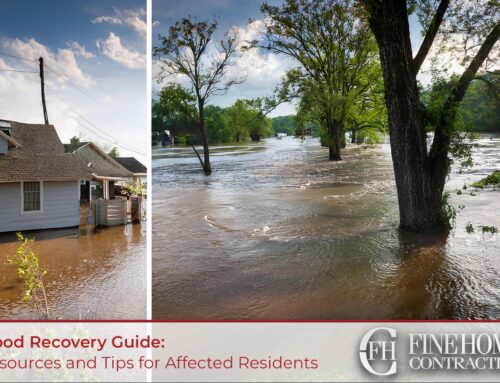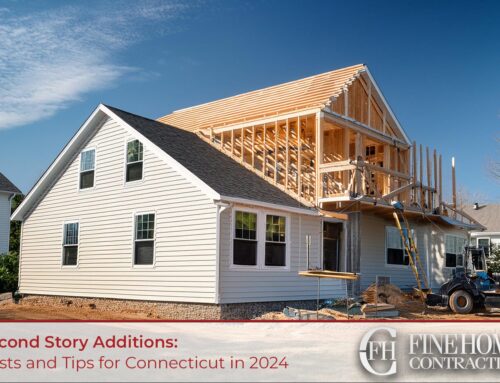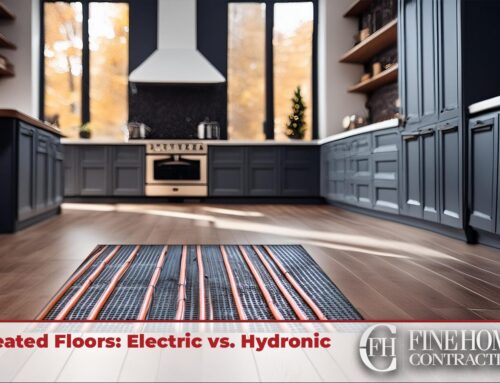Fire is a real and devastating threat to homes that can spread quickly and cause immense damage. According to the U.S. Fire Administration, an average of 358,500 residential building fires are reported per year in the United States. It’s crucial for homeowners to take proactive steps to protect their property and families. This comprehensive guide covers how to prevent fires from starting in a home as well as how to best contain them if they do occur.
Fire Prevention Tips
An ounce of fire prevention is worth a pound of cure when it comes to protecting your home. Here are proactive tips to minimize fire risks:
Kitchen Fire Safety
- The kitchen sees the most home fires – keep flammable materials like dish towels, curtains, and packaging away from heat sources like stoves, ovens, and toasters.
- Establish a “kid-free zone” 3 feet around cooking areas so children cannot reach items or knock them over.
- Keep a pot lid nearby to smother any pan or pot fires that may start. Flour, baking soda or salt can also suffocate grease and oil fires. Never use water on a grease fire.
- Avoid loose clothing that can catch fire if leaning over a gas burner.
Electrical Fire Prevention
- Don’t overload outlets with too many plugs. Upgrade to a grounded outlet with more slots or use a surge protector if needed.
- Extension cords should only be temporary solutions – have additional outlets professionally installed for frequent use areas.
- Inspect electrical cords for damage like fraying or cracking. Discontinue use immediately if any wear is spotted.
- Ensure outlets have ground fault circuit interrupters (GFCIs) in wet areas like kitchens, bathrooms, laundry rooms, and exteriors.
Fireplace and Heating Safety
- Have chimneys professionally cleaned and inspected annually to remove creosote buildup.
- Always use a fireplace screen to prevent embers from escaping.
- Keep anything combustible at least 3 feet from heat sources like portable space heaters.
- Make sure furnaces and water heaters are serviced per manufacturer recommendations.
Smoke Detector Installation
- Smoke detectors expire after 10 years. Replace detectors made before 2012.
- Install ionization detectors for early warning of fast flaming fires. Photoelectric models are better for slow smoldering fires.
- For full coverage, put detectors in every bedroom, in hallways outside bedrooms, and on every level including the basement.
- Test detectors monthly by pressing the test button. Replace batteries every 6 months.
Fire Suppression and Evacuation Tips
Should a fire ignite in your home, quick action is necessary to suppress the flames and evacuate safely. Follow these tips:
- Keep an ABC type fire extinguisher in the kitchen, garage, basement, and bedrooms. Get trained on proper use. Aim at the base of flames and sweep side to side.
- If a fire starts in a pan, smother it with a lid or baking soda/salt rather than using water. For an oven fire, turn off the heat and keep the door closed.
- Teach children to STOP, DROP to the ground, and ROLL back and forth if their clothes catch fire. Cool burns with cool water.
- Have an escape ladder ready for upper floor windows if stairwells become blocked during a fire.
- Close doors and windows when fleeing to contain the fire. Never open doors that are hot.
- Designate a family meeting spot like a mailbox or specific neighbor’s home when evacuating so everyone can be accounted for.
- Practice your fire escape plan twice a year so everyone knows what to do. Identify two ways out of every room.
- If trapped, place cloth under the door to block smoke. Signal rescuers by waving a bright cloth out the window.
- Fire-Safe Home Construction Materials
Using fire-resistant building materials can prevent fires from spreading rapidly and give you more time to evacuate safely. Consider these upgrades:
- Metal roofing like copper, tin, and stainless steel is ideal for fire-prone areas. Tile and slate are other good options.
- Exterior siding materials like stucco, fiber cement, and brick are very fire-resistant. Avoid vinyl.
- Double-pane windows can withstand heat better than single pane. Tempered glass is strongest.
- Steel, solid wood, or solid-core vinyl doors hold up better than hollow core options when exposed to fire.
- Non-flammable fencing like block, rock, and metal won’t enable spreading.
Wildfire Preparation
Homeowners in wildfire-prone areas face additional risks and need specialized prevention and readiness steps:
- Create a 30-100 foot safety zone around the home – clear this area of leaves, debris, bark, plants, firewood piles, sheds, etc.
- Box in eaves, attics, crawl spaces with non-combustible materials to prevent ember entry. Cover vents with metal mesh.
- Connect garden hoses long enough to reach every part of the home and have nozzles adjusted to a spray.
- Setup a portable emergency water supply like a pool, well, or water tanks in case hydrants lose pressure.
- Plan multiple evacuation routes, identify nearby shelters, and prepare supplies in case advised to evacuate immediately.
Advanced Planning for Fire Safety
Being proactive and prepared well in advance of any emergency is key to protecting your property and family from tragic fire. We hope these comprehensive tips help you analyze risks, reduce hazards, and develop responsive action plans. Reach out to a home fire prevention professional if you need help making safety upgrades to your home. Stay vigilant and fire-safe!







